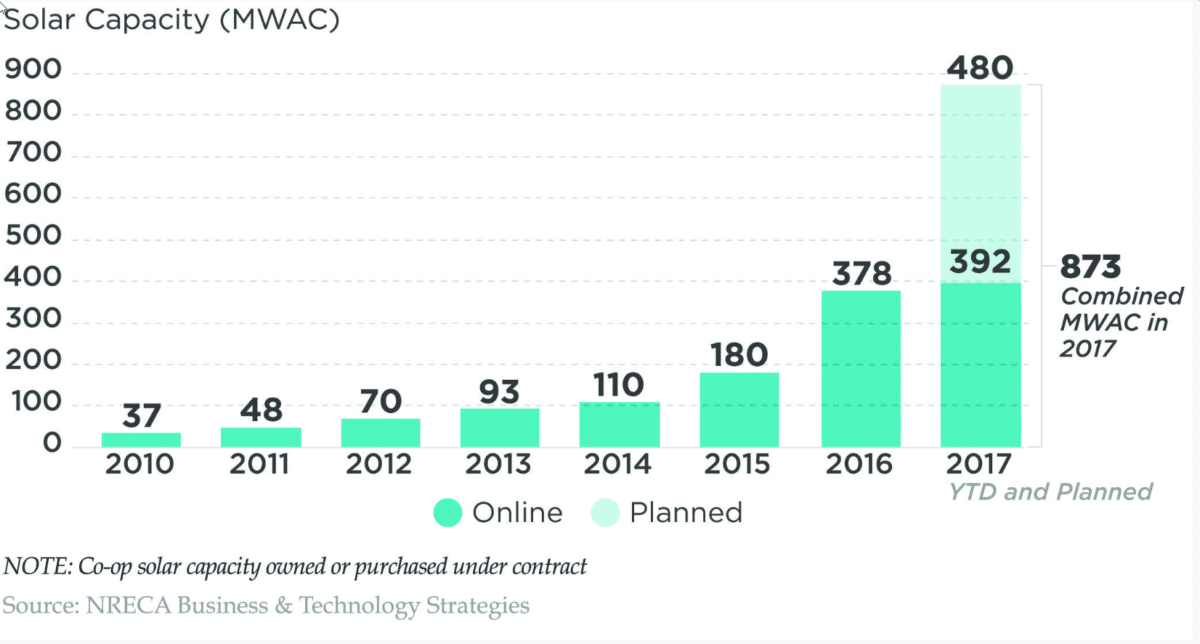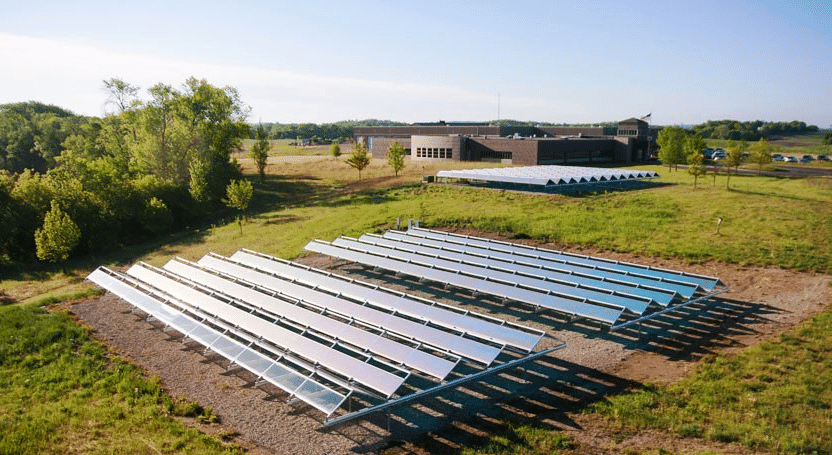Out in the heartland, the market for solar energy is heating up – and one organization doesn’t see the momentum slowing down any time soon.
According to the latest data released by the National Rural Electric Cooperative Association (NRECA), its members are already on pace to add 480 MW of solar in 2017, bringing the total capacity of co-op solar to 873 MW. By comparison, co-ops only had 180 MW installed only two years ago and 37 MW seven years ago.
In part, the growth has been fueled by a significant increase in the number of rural co-operatives, as 10 more states have added organizations in the past two years. Georgia, long considered an underserved solar market, leads the country in co-operative-led solar installations with 122 MW in new co-op capacity – followed by New Mexico, Hawaii, Colorado, Arizona, Maryland and North Carolina.
“Electric cooperatives continue to aggressively pursue solar as an energy source and are the leaders in community solar,” says Jim Matheson, NRECA CEO. “Co-ops across the nation are laboratories of innovation and are responsive to member needs as they work to power and empower millions of American families and businesses.”

The reasons for the boom vary as widely as the types of rural areas in the country. NRECA surveyed its members between December and January in an effort to figure out what factors have driven this significant uptick in installations – and it appears the majority of the growth is a response to consumer demand. NRECA reports that 68% percent of respondents said they were motivated by a desire to increase consumer satisfaction, while 59% cited consumer demand for solar offerings. An additional 43% pointed to the plummeting costs of solar development.
It’s also important to note that co-operation between co-ops is also fueling the increased capacity. Forty-two percent of co-op solar projects are joint efforts involving either the generation and transmission co-ops (also called power supply co-ops) or fellow distribution co-ops, according to the survey.
“Cooperation among cooperatives is one of our core principles,” Matheson said. “The fact that more than 40% of co-op solar capacity comes from collaboration among co-ops demonstrates that this principle is truly transformative. Just in the last year, nine generation and transmission cooperatives announced they will be pursuing solar development with their distribution co-op members. We fully expect that number to increase this year.”
The report appears to undercut a common theme among the industry’s critics, which is that solar is only popular among the wealthy homeowners. If NRECA’s numbers are correct, it’s clear that consumer demand is driving solar development in rural areas of the country. It’s a fact that national associations like the Solar Energy Industries Association (SEIA) could exploit in any attempt it makes to affect solar policy at the federal level.
In the past, SEIA has struggled – and continues to struggle – to mobilize solar consumers in support of solar-friendly policies at the state and federal levels, instead often relying on solar installers and manufacturers to make their voices heard. In recent weeks, under the leadership of new President and CEO Abby Hopper, SEIA has announced plans to expand its efforts beyond what are generally considered traditional solar states, so the policies of the organization may be changing.
NRECA is a national service organization that represents the U.S.’ more than 900 private, not-for-profit, consumer-owned electric cooperatives.
This content is protected by copyright and may not be reused. If you want to cooperate with us and would like to reuse some of our content, please contact: editors@pv-magazine.com.








By submitting this form you agree to pv magazine using your data for the purposes of publishing your comment.
Your personal data will only be disclosed or otherwise transmitted to third parties for the purposes of spam filtering or if this is necessary for technical maintenance of the website. Any other transfer to third parties will not take place unless this is justified on the basis of applicable data protection regulations or if pv magazine is legally obliged to do so.
You may revoke this consent at any time with effect for the future, in which case your personal data will be deleted immediately. Otherwise, your data will be deleted if pv magazine has processed your request or the purpose of data storage is fulfilled.
Further information on data privacy can be found in our Data Protection Policy.